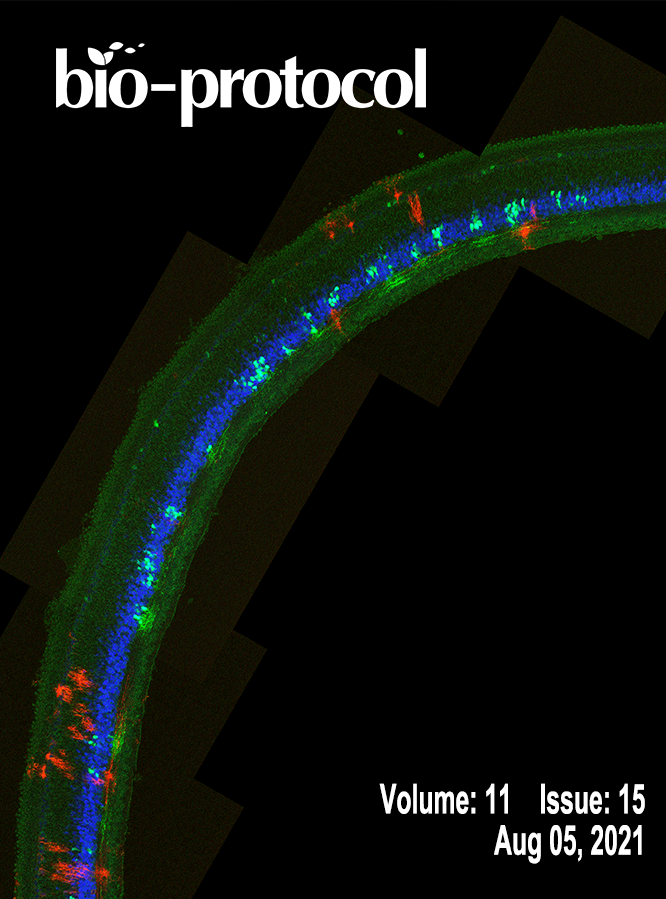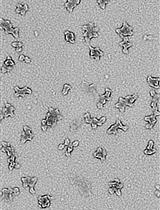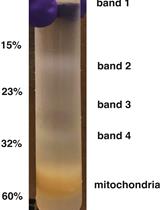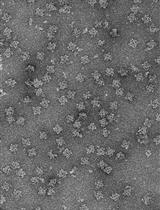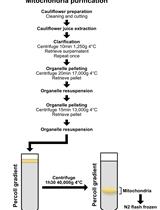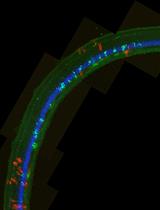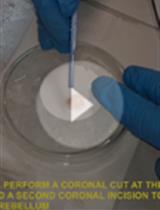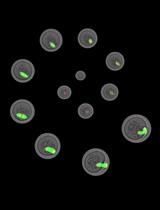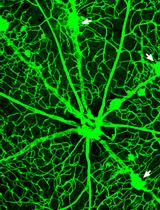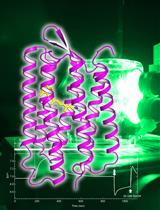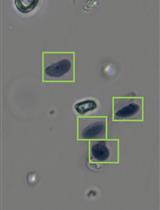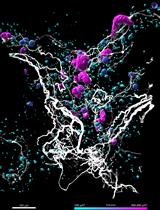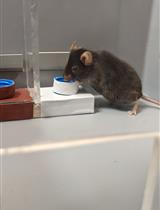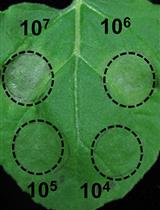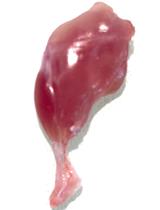往期刊物2021
卷册: 11, 期号: 15
生物化学
Efficient and Rapid Analysis of Polysomes and Ribosomal Subunits in Cells and Tissues Using Ribo Mega-SEC
利用Ribo Mega-SEC高效快速分析细胞和组织中的多聚体和核糖体亚基
Purification of Mitochondrial Ribosomes with the Translocase Oxa1L from HEK Cells
用转位酶Oxa1L纯化HEK细胞线粒体核糖体
Purification of Recombinant Wild Type and Mutant Ryanodine Receptors Expressed in HEK293 Cells
HEK293细胞表达的重组野生型和突变型Ryanodine受体的纯化
生物物理学
Purification and Cryo-electron Microscopy Analysis of Plant Mitochondrial Ribosomes
植物线粒体核糖体的纯化和低温电镜分析
细胞生物学
CRISPR-mediated Labeling of Cells in Chick Embryos Based on Selectively Expressed Genes
基于选择性表达基因的CRISPR介导的鸡胚胎细胞标记
Cell-attached and Whole-cell Patch-clamp Recordings of Dopamine Neurons in the Substantia Nigra Pars Compacta of Mouse Brain Slices
小鼠脑片黑质致密部多巴胺神经元的细胞贴附和全细胞膜片钳记录
发育生物学
Isolation and in vitro Culture of Mouse Oocytes
小鼠卵母细胞的分离与体外培养
A Genetically Engineered Mouse Model of Venous Anomaly and Retinal Angioma-like Vascular Malformation
静脉畸形和视网膜血管瘤样血管畸形的基因工程小鼠模型
医学
A Swimming-based Assay to Determine the Exercise Capacity of Adult Zebrafish Cardiomyopathy Models
基于游泳的测定成年斑马鱼心肌病模型运动能力的方法
微生物学
Ion Transport Activity Assay for Microbial Rhodopsin Expressed in Escherichia coli Cells
大肠杆菌表达的微生物紫红质离子转运活性测定
分子生物学
Isolation of Nuclei from Mouse Dorsal Root Ganglia for Single-nucleus Genomics
小鼠背根神经节细胞核的分离及其单核基因组学研究
Fe-NTA Microcolumn Purification of Phosphopeptides from Immunoprecipitation (IP) Eluates for Mass Spectrometry Analysis
Fe-NTA微柱纯化免疫沉淀(IP)洗脱物中磷酸肽的质谱分析
神经科学
Optical Clearing and 3D Analysis Optimized for Mouse and Human Pancreata
小鼠和人胰腺的光学清除和三维分析优化
A Simple Spatial-independent Associative and Reversal Learning Task in Mice
小鼠的一个简单的空间独立的联想和逆转学习任务
植物科学
A Fast and Easy Method to Study Ralstonia solanacearum Virulence upon Transient Gene Expression or Gene Silencing in Nicotiana benthamiana Leaves
利用本生烟叶片基因瞬时表达或沉默研究青枯菌毒力的快速简便方法
干细胞
Mouse Periosteal Cell Culture, in vitro Differentiation, and in vivo Transplantation in Tibial Fractures
小鼠骨膜细胞培养、体外分化及胫骨骨折的体内移植


